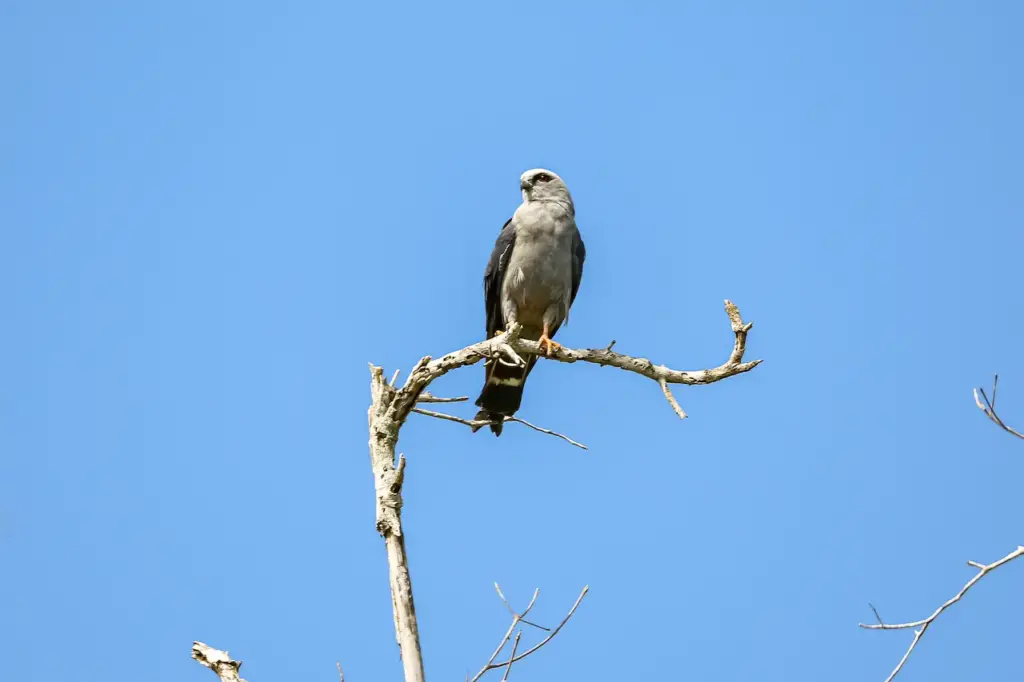The Plumbeous Kite, Ictinia plumbea, is a bird of prey in the family Accipitridae, which also includes the eagles, hawks, and Old World vultures.

Distribution / Range
The Plumbeous Kite breeds in the tropical New World, from eastern Mexico through Central America to Peru, Bolivia, and Argentina. It also breeds in Trinidad.
Birds in the north and south of the breeding range, including the populations in Central America, Trinidad, northern Venezuela and Colombia, and southern Argentina and Brazil, are migratory, moving into tropical South America in the northern winter.
Breeding / Nesting
This is a bird of lowland forest and savannah, which builds a stick nest in a tree and lays 1-2 blue-white eggs.
It is typically 33-38cm long and weighs 190-280g. It is not particularly gregarious, although often seen in flocks on migration.
The Plumbeous Kite has long, pointed wings. Adults are mainly slate-grey, with a paler head and underparts. The short black tail has 2-3 white bands. The eyes are red and the legs are orange. In flight, this kite shows a rufous primary patch.
Males and females look alike, but immature birds have white-streaked grey upperparts and dark-streaked whitish underparts. They lack the rufous wing patch.

The flight is slow, with frequent glides, and the prey is almost exclusively insects taken in the air. This kite often perches conspicuously on dead branches, with its long wings projecting well beyond the tail.
Calls / Vocalization
The call of Plumbeous Kite is a whistled si-see-oo.





